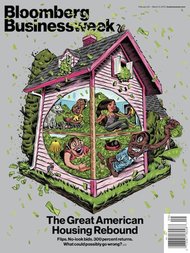It also heralds a larger shift in social media. Facebook arguably invented modern social networking, and is still the king. But increasingly its approach is seen as passive and outdated as people flock to sites like Tumblr where they can be more actively engaged in creating personal, expressive content to share — and which could potentially translate to advertising dollars.
“People love a stage or a pulpit from which they can broadcast,” S. Shyam Sundar, a director of the Media Effects Research Laboratory at Pennsylvania State University, explained. “The genie is out of the bottle. Everyone loves it and it’s very seductive for users to get online and be a source of content, rather than just consuming passively.”
This is behind the appeal of sites like Tumblr, where millions have created signature blogs; or Reddit, the news aggregator, which is encouraging users to make and upload video content to share; or video sites like YouTube. Also, Vine, a Twitter app that allows people to easily make and post six-second videos has been wildly popular since its debut in January. One of Vine’s creators, Dom Hofmann, said its initial success was “rooted in the simplicity of the tool.”
Snapchat, the messaging application, which lets people add text or draw cartoons on top of photos and videos, is processing upward of 150 million images each day. And Instagram, which Facebook acquired last year, has attracted more than 100 million users in its short life span — letting people add vintage effects and other filters to their photos.
The more services like Vine and Tumblr can “come up with ways to let people control and generate content and project identity,” Mr. Sundar predicted, the more successful they will be.
Still, these newer sites have not yet proved they are moneymakers, which makes Yahoo’s move a big bet. And as much as Tumblr’s sale can be seen as a success story for the small company, it also hints at the darker struggles of a social media service that is rich in users and nothing else.
Plus, Facebook is still a force to be reckoned with. The company has a billion-plus users and generated $5 billion in revenue last year. But except for the Instagram acquisition, Facebook has been slow to introduce tools to let members make and create interesting content beyond uploading photos and videos.
The result is that it has evolved more into a social directory, a kind of yellow pages of the Internet, where people spend time tending to their public image and endlessly tweaking security settings to keep their party pictures private. And signs have begun to emerge that users are becoming bored and disenchanted with the site.
A recent report by Piper Jaffray that surveyed 5,200 American teenagers on their online use found that while Facebook was still the most important media destination for teenagers, its popularity slipped by 9 percent from spring of 2012.
Gene Munster, one of the lead analysts on the survey, said that if anything, the results showed that the taste and interest of Web users, particularly younger ones, was fickle and fleeting.
“It’s not a question of whether or not Facebook will stay relevant,” Mr. Munster said. “On the margin, they will still be relevant. It’s about the potential for declining engagement and what that impact is over the longer-term for making money.”
People have so many news feeds, sites, apps and in-boxes competing for their time, said Kim Celestre, an analyst with Forrester Research, that the sites and services where they are active participants are more likely to hold their attention for longer, attracting advertising dollars. Tumblr says its members spend 24 billion minutes on the site each month.
“Big marketing campaigns are looking to bring people into their brand and immerse them,” she said.
Article source: http://www.nytimes.com/2013/05/21/technology/social-media-is-moving-into-creativity-like-tumblr.html?partner=rss&emc=rss
